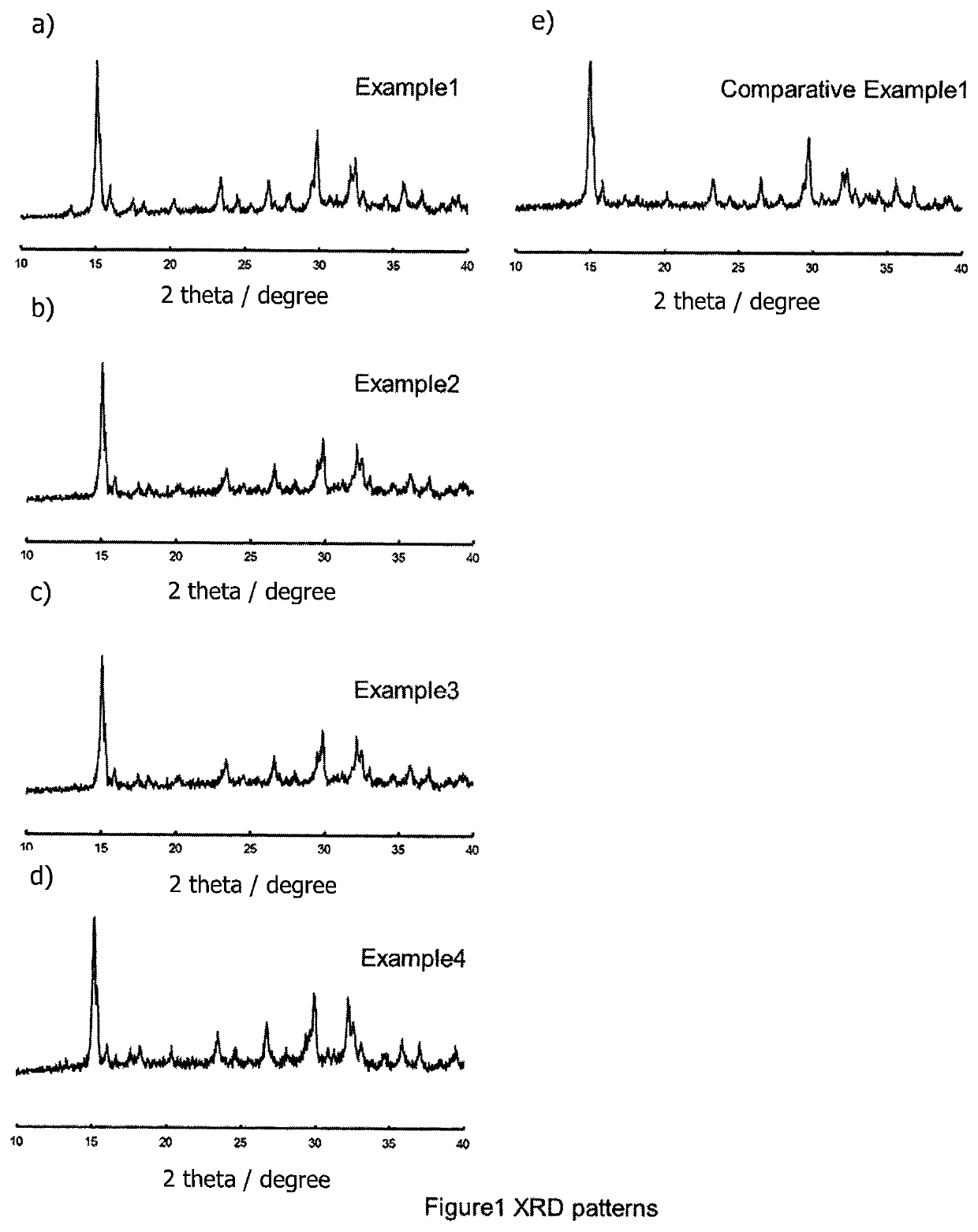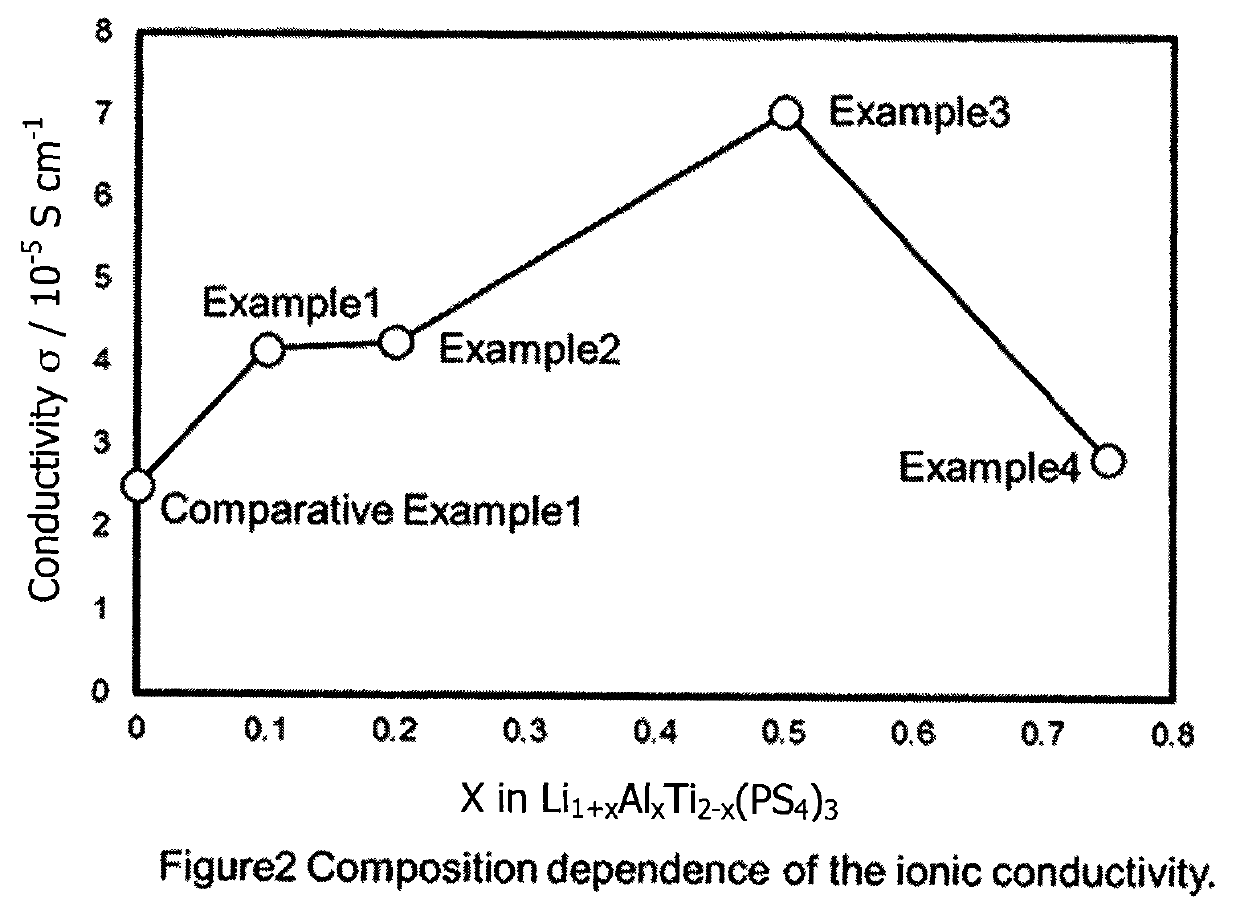Increasing ionic conductivity of LiTi2(PS4)3 by Al doping
- Summary
- Abstract
- Description
- Claims
- Application Information
AI Technical Summary
Benefits of technology
Problems solved by technology
Method used
Image
Examples
example 1
Synthesis of Solid Electrolytes
Mixture Step
[0065]The solid electrolyte Li1+xAlxTi2−x(PS4)3 was synthesized using starting materials Li2S (Sigma), TiS2 (Sigma), Al2S3 (Sigma) and P2S5 (Aldrich). They were mixed at the weight ratio listed in Table 1 below.
Amorphasizing Step
[0066]The mixed sample was put into the zirconium pot (45 mL) with 18 zirconium balls (Ø10 mm) under Argon. The pot was closed and treated with planetary milling equipment (Fritsch, P7) at 370 rpm for 40 h to obtain the precursor.
Heat Treatment Step
[0067]The precursor was sealed into the glass tube at the pressure of 30 Pa and then heated at T=400° C. for 8 h.
Measurement of Li Ion Conductance
[0068]Li ion conductance at a temperature of 25° C. was measured using the sulfide solid electrolyte material obtained. First, 100 mg of the sulfide solid electrolyte material was added to a cylinder made of alumina and pressed at 4 ton / cm2 to form a solid electrolyte layer. The pellet was sandwiched by SUS current collector for...
example 2
[0073]Only the x value was different from Example 1—here, the x value was 0.25. The ionic conductivity of the material produced by Example 2 was 4.3×10−5 S / cm. Essentially, only the peaks of the type observed for LiTi2(PS4)3 were detected by XRD.
example 3
[0074]Only the x value was different from Example 1—here, the x value was 0.5. The ionic conductivity of the material produced by Example 3 was 7.1×10−5 S / cm. Essentially, only the peaks of the type observed for LiTi2(PS4)3 were detected by XRD.
PUM
 Login to View More
Login to View More Abstract
Description
Claims
Application Information
 Login to View More
Login to View More - R&D
- Intellectual Property
- Life Sciences
- Materials
- Tech Scout
- Unparalleled Data Quality
- Higher Quality Content
- 60% Fewer Hallucinations
Browse by: Latest US Patents, China's latest patents, Technical Efficacy Thesaurus, Application Domain, Technology Topic, Popular Technical Reports.
© 2025 PatSnap. All rights reserved.Legal|Privacy policy|Modern Slavery Act Transparency Statement|Sitemap|About US| Contact US: help@patsnap.com



